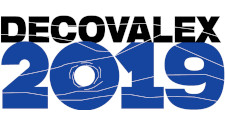
Radioactive Waste Management (RWM) has recently published the final report of the DECOVALEX-2019 project. DECOVALEX is a long-standing international collaboration between waste management organisations, regulators, research institutions and their supporting organisations, investigating complex coupled thermal-hydraulic-mechanical-chemical processes in the sub-surface, with a particular focus on radioactive waste management.
Quintessa has been supporting RWM in two tasks; Task A: "modElliNg Gas INjection ExpERiments (ENGINEER)" and Task E: "Upscaling of modelling results from small scale to one-to-one scale". The final report summarises the key outcomes of the RWM/Quintessa work over the duration project in a digestible format, including key insights under both tasks. Task A was designed to improve understanding and mathematical representation of dilatant flow of gas through compacted bentonite (as frequently proposed for use for buffers and seals in radioactive waste disposal facilities) using two state-of-the-art laboratory scale experiments. In contrast, Task E was focussed on multiple scales, primarily considering two field experiments and a synthetic whole repository study, looking at thermo-hydraulic-mechanical couplings arising from temperature changes due to heat-generating radioactive waste. For Task E, the focus was on the degree to which understanding could be translated between experiments and different spatial scales, including the use of blind predictions to objectively test the predictive capability of the models.
The work has demonstrated that, even at the laboratory scale for Task A with high quality experiments and data, when attempting to interpret complex non-linear phenomena a detailed understanding of the experiment and appropriate representation of the apparatus in the modelling is critical in improving understanding of the underlying physics. With this experimental understanding in place, a good representation of the experiments is possible and the approach used gives some confidence that application to much larger scales is possible. When working at the field scale for the Callovo-Oxfordian formation in Task E, where the mathematical representation of physical processes are relatively well understood, the treatment of parameter variability and uncertainty was seen to be far more important in producing good modelling results than other types of uncertainty, such as treatment of boundary conditions, representation of tunnel construction and representing the ventilation phase.
A series of academic papers, with Quintessa/RWM as lead authors for three and co-authors for many more, have been published, accepted for publication or are in review for the DECOVALEX-2019 virtual special issue in the International Journal of Rock Mechanics and Minings Sciences. Quintessa and RWM are now moving forward with the next phase of DECOVALEX and look forward to another productive four years of leading edge radioactive waste management research.

